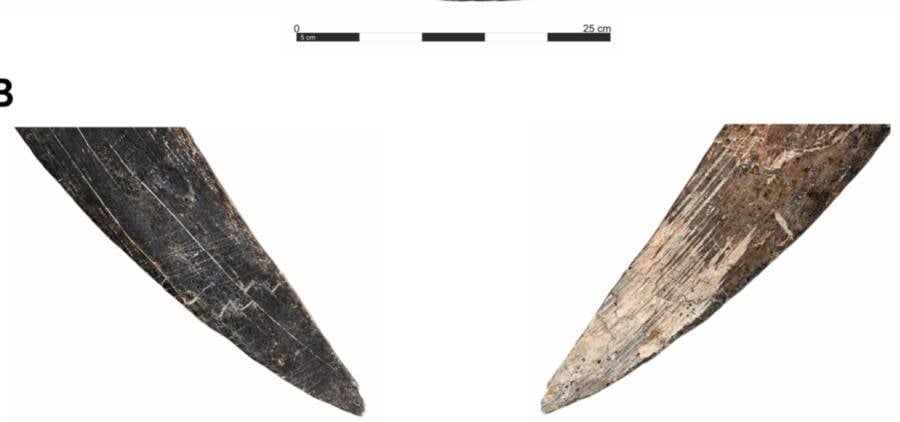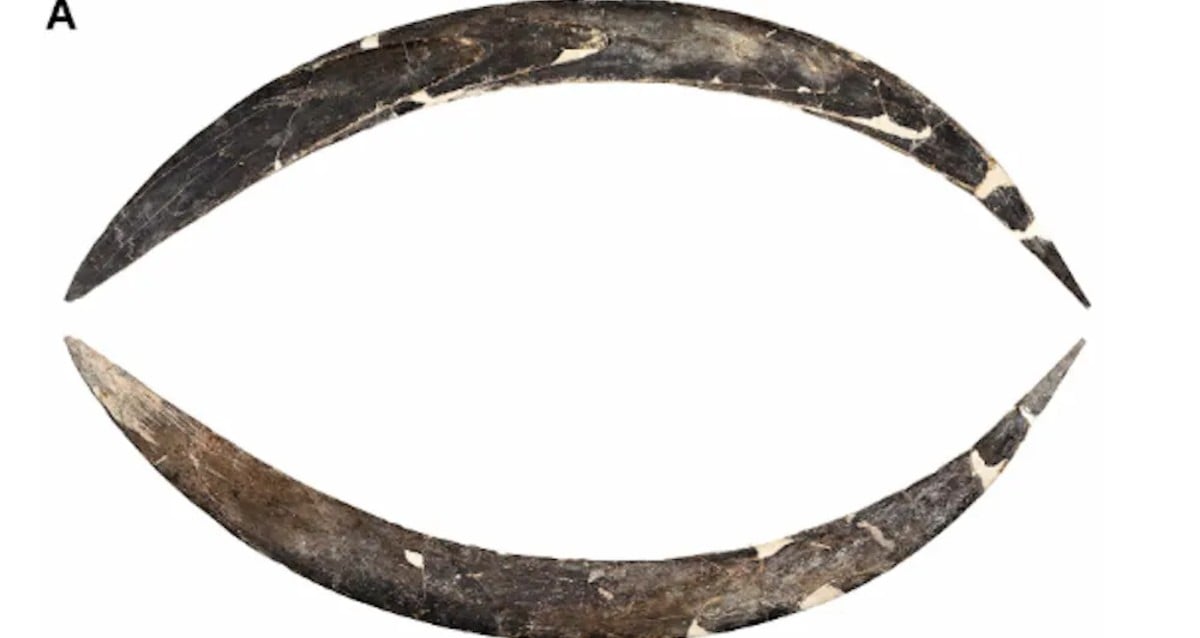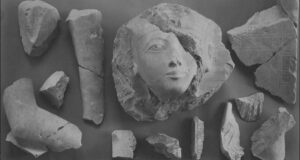Ancient Boomerang Mystery Deepens: New Study Uncovers Even Older Origins Than Imagined
Not only is the boomerang much older than researchers previously estimated, it’s also a fascinating prehistoric object for other reasons.
How Prehistoric People Used Boomerangs
As the researchers wrote in their study, the boomerang from Obłazowa Cave was made from a mammoth tusk. Some scratches on the boomerang are from the mammoth’s life, but others appear to be “purposeful modification.”

Talamo et al., PLOS ONE, 2025The boomerang showed signs of “purposeful modification,” as well as traces of red pigment.
“At one end… a set of thin, oblique scratches diverges from the natural axis,” the researchers wrote in their study. “The opposing, flatter side is polished and shows two types of marks attributed to human activity. The first are fine, nearly parallel lines, possibly created during shaping. The second set consists of deeper, wider incisions, which may have been added as decoration, especially where these lines cross at the opposite end.”
Researchers also detected traces of red pigment, which suggests that the boomerang was painted and had a “potential symbolic or aesthetic function.” It could have also been used for ancient ceremonies or rituals.
Though modern-day boomerangs are meant to come back after they’re thrown, researchers suspect that this object was a “non-returning” boomerang. Though able to fly, similar types of boomerangs found in Australia were often used for tasks like “butchering animals, digging wells or cooking pits, scraping hot ashes from cooking carcasses, retouching stone weapons, and even producing musical sounds.”














Post Comment